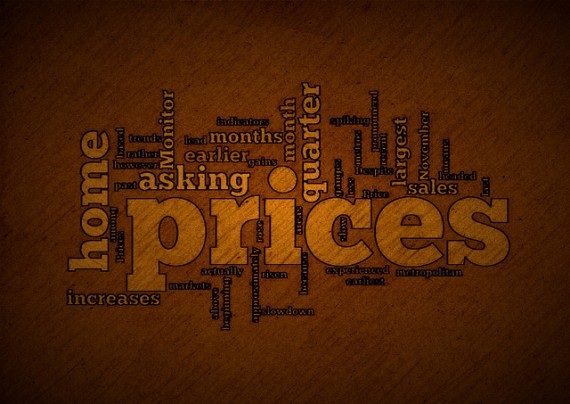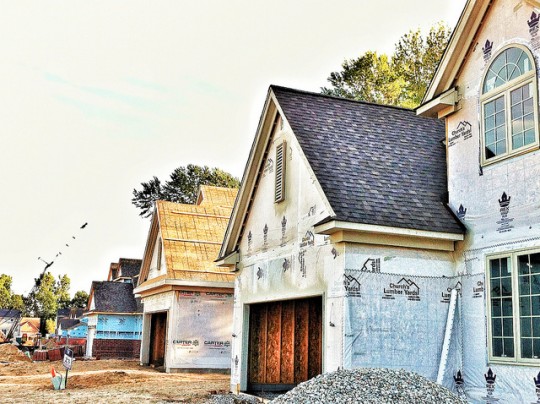Trulia’s Price Monitor gauges home price trends based on asking prices, which means the Monitor is among the earliest indicators of where home values are headed mostly due to the fact that asking prices lead sales prices by approximately two months. In November, asking prices were up 1 percent month-over-month and 3 percent quarter-over-quarter. Prices are now 12.1 percent above last year and have risen in all but two of the largest metros over the past 12 months. Despite the increases, however, home price gains are beginning to slow after spiking earlier this year. The slowdown is most pronounced in metropolitan areas that experienced the largest price increases in the first half of 2013. On the other hand, in the 56 markets where prices rose by less than 10 percent year-over-year, price gains actually accelerated in the most recent quarter. More here.
Archive for December 2013
Surging New Home Sales Not What They Seem
Delayed due to the government shutdown, new home sales data for September and October was released together this year. The results, from the U.S. Census Bureau and the Department of Housing and Urban Development, show a 25.4 percent sales spike in October from September’s rate. The surge is the largest in more than 30 years but isn’t all it seems to be. In fact, the report includes a downward revision of August’s estimate that dropped that month’s sales estimate by 15 percent. From there, new home sales fell an additional 6.6 percent in September. That means, October’s skyrocketing sales were merely making up for a slow end of the summer sales season. Peter Boockvar, chief market analyst of economic advisory firm The Lindsey Group, told NBC News that weak sales activity from July through September was clearly based on mortgage rates. According to Boockvar, falling rates in October brought out buyers who may have previously been on the fence. More here and here.
How Much You Need To Earn To Buy A Home
A recent study of 25 major U.S. metropolitan areas found that the money someone needs to earn in order to buy a median-priced home in their market varies widely across the country. There is more than a $100,000 difference between the salary required to purchase an affordable home in the Cleveland area, for example, as compared to San Francisco. The data, from HSH Associates, looked at median home prices from the National Association of Realtors’ third-quarter data and the average interest rate for a 30-year fixed-rate mortgage to determine how much money someone would need to make in order to be able to afford the principal and interest payments on a home in their market. According to the results, a salary of less than $30,000 a year is enough to own a home in Cleveland, Cincinnati, St. Louis, Atlanta, Tampa, and Orlando. Cities such as Houston, Dallas, and Chicago all require less than $50,000 a year in salary to afford a home. The most expensive metro was San Francisco, where $125,000 is needed. San Diego, Los Angeles, New York, and Boston rounded out the top five most expensive areas. More here.
Small Counties Fared Better Following Recession
The Census Bureau’s American Community Survey collects a wide range of important statistics about communities across the country. A recent housing brief released by the Bureau – which used the survey to focus on homeownership rates and home values across the country – found that small counties fared better following the recession as compared to larger counties. Among the 50 largest metro areas, median home values fell in 43 of them and 49 out of 50 saw declining homeownership rates after the most recent recession. Among counties with populations between 20,000 and 65,000, on the other hand, 66.9 percent had median home values that were not statistically different from pre-recession levels. Nationally, the homeownership rate declined by 1.7 percent between 2010 and 2012. Washington D.C. had the lowest rate at 41.6 percent while West Virginia had the highest with 72.9 percent. More here and here.
What’s Ahead For Housing in 2014
According to Freddie Mac’s chief economist, Frank Nothaft, 2014 should shape up to be better than 2013. Nothaft, in a recent article, said there’s reason to be optimistic about both the economy and the housing market. Economic growth, for example, is expect to be between 2.5 and 3.0 percent in the new year, more than 0.5 percent better than 2013. The accelerated growth will lead to continued improvement in the job market, which should push the unemployment rate below 7 percent by mid-year. Single-family home sales and housing starts will both rise to their highest level since 2007 and – despite rising mortgage rates – housing will remain generally affordable across the majority of the country. For-sale inventory, on the other hand, will be tight throughout the year due to the number of potential sellers constricted by negative equity. Home prices, however, will continue to rise, relieving underwater homeowners and helping to support higher home sales. According to Nothaft, both home prices and sales will come in around 5 percent higher than they were in 2013. More here.





